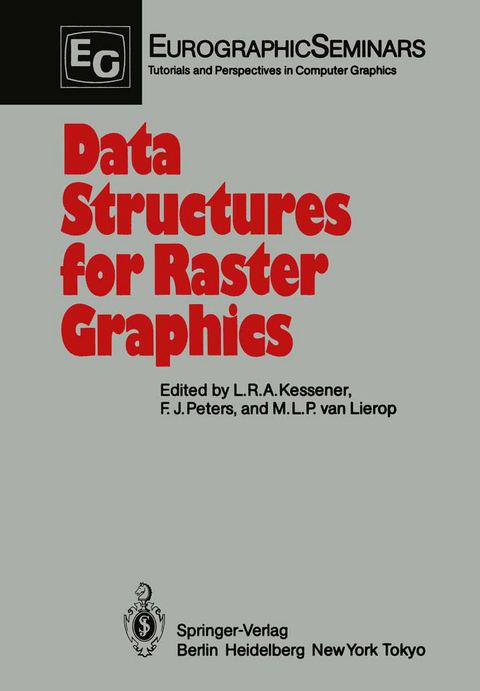
Data Structures for Raster Graphics
Proceedings of a Workshop held at Steensel, The Netherlands, June 24–28, 1985
Seiten
2011
|
1. Softcover reprint of the original 1st ed. 1986
Springer Berlin (Verlag)
978-3-642-71073-5 (ISBN)
Springer Berlin (Verlag)
978-3-642-71073-5 (ISBN)
Raster graphics differs from the more traditional vector or line graphics in the sense that images are not made up from line segments but from discrete elements orderly arranged in a two-dimensional rectangular region. There are two reasons for the growing popularity of raster graphics or bit-mapped displays: I) the possibilities they offer to show extremely realistic pictures 2) the dropping prices of those displays and associated processors and memories. With the rise of raster graphics, all kinds of new techniques, methods, algorithms and data representations are associated -such as ray tracing, raster operations, and quadtrees-bringing with them a lot of fruitful research. As stated above raster graphics allows to create extremely realistic (synthesized) pictures. There are important applications in such diverse areas as industrial deSign, flight Simulation, education, image processing and animation. Unfortunately many applications are hampered by the fact that with the present state of the art they reqUire an excessive amount of computing resources. Hence it is worthwhile to investigate methods and techniques which may be of help in redudng computer costs associated with raster graphics applications. Since the choice of data srtuc tures influences the efficiency of algorithms in a crudal way, a workshop was set up in order to bring together a (limited) number of experienced researchers to dis cuss this topic. The workshop was held from 24 to 28 June 1985 at Steensel, a tiny village in the neighbourhood of Eindhoven, the Netherlands.
Problems with raster graphics algorithms.- Display algorithms for quadtrees and octtrees and their hardware realisation.- Intermediate data structures for display algorithms.- Data structures for ray tracing.- An approach for a PHIGS machine.- Using linear quadtrees to store vector data.- A model for raster graphics language primitives.- Pattern representation.- A 3D animation system.- Applications of the method of invariants in computer graphics.- Bibliography on quadtrees and related hierarchical data structures.
| Erscheint lt. Verlag | 19.11.2011 |
|---|---|
| Reihe/Serie | Focus on Computer Graphics |
| Zusatzinfo | VII, 201 p. |
| Verlagsort | Berlin |
| Sprache | englisch |
| Maße | 170 x 244 mm |
| Gewicht | 381 g |
| Themenwelt | Mathematik / Informatik ► Informatik ► Datenbanken |
| Mathematik / Informatik ► Informatik ► Software Entwicklung | |
| Informatik ► Theorie / Studium ► Algorithmen | |
| Informatik ► Weitere Themen ► CAD-Programme | |
| Schlagworte | algorithms • Animation • data structures • Image Processing • linear optimization • Ray tracing • Simulation |
| ISBN-10 | 3-642-71073-5 / 3642710735 |
| ISBN-13 | 978-3-642-71073-5 / 9783642710735 |
| Zustand | Neuware |
| Haben Sie eine Frage zum Produkt? |
Mehr entdecken
aus dem Bereich
aus dem Bereich
IT zum Anfassen für alle von 9 bis 99 – vom Navi bis Social Media
Buch | Softcover (2021)
Springer (Verlag)
29,99 €
Interlingua zur Gewährleistung semantischer Interoperabilität in der …
Buch | Softcover (2023)
Springer Fachmedien (Verlag)
32,99 €
Buch | Softcover (2024)
Lehmanns Media (Verlag)
39,99 €


